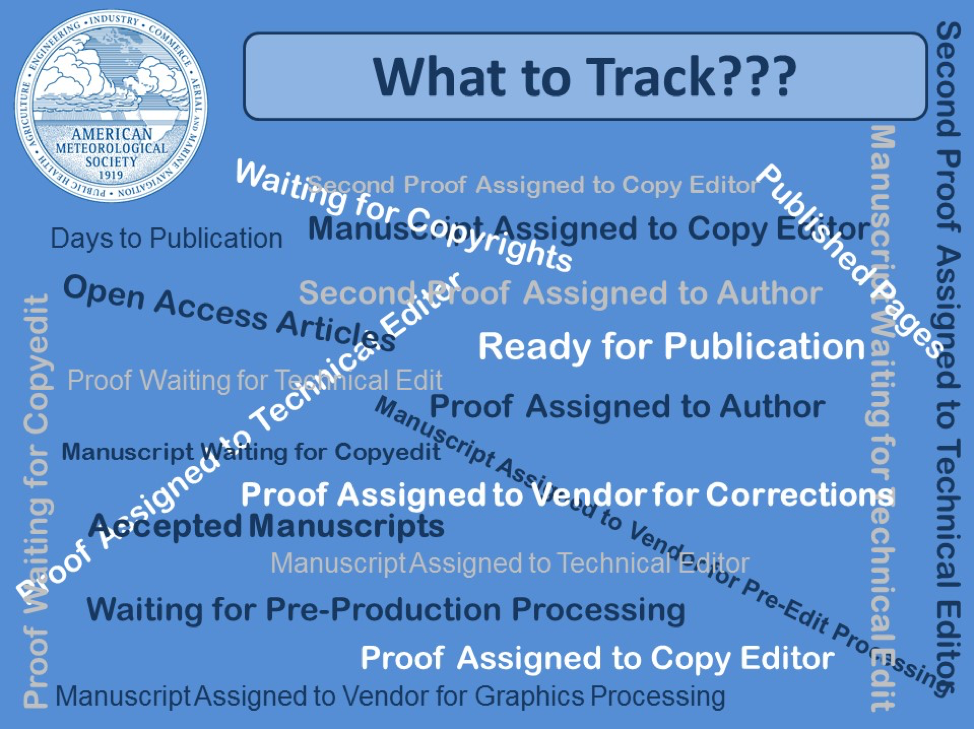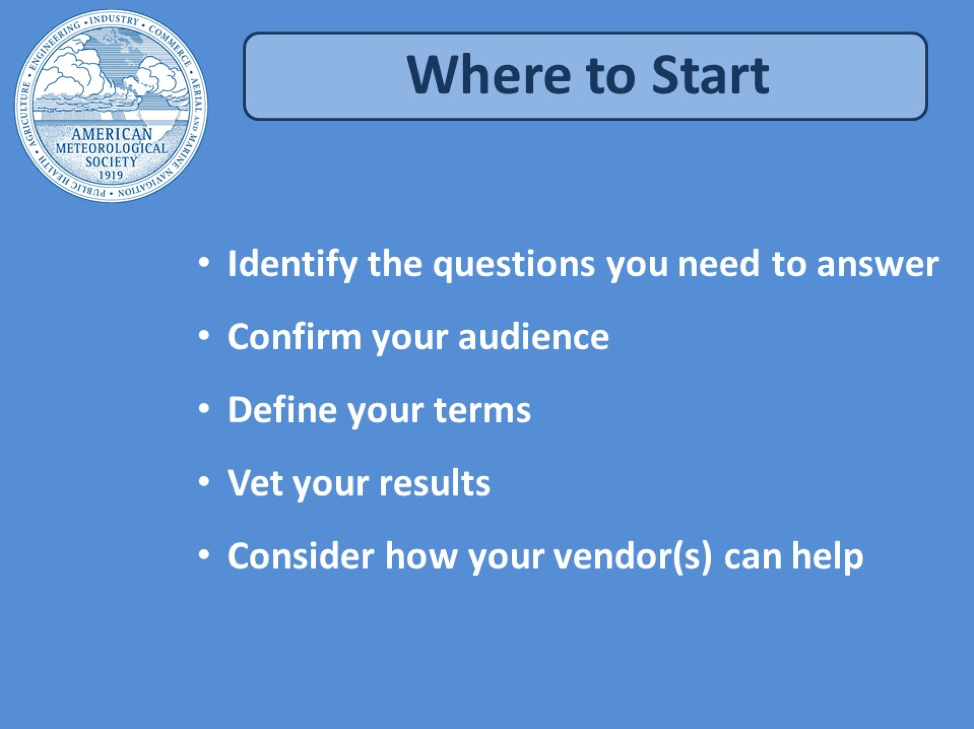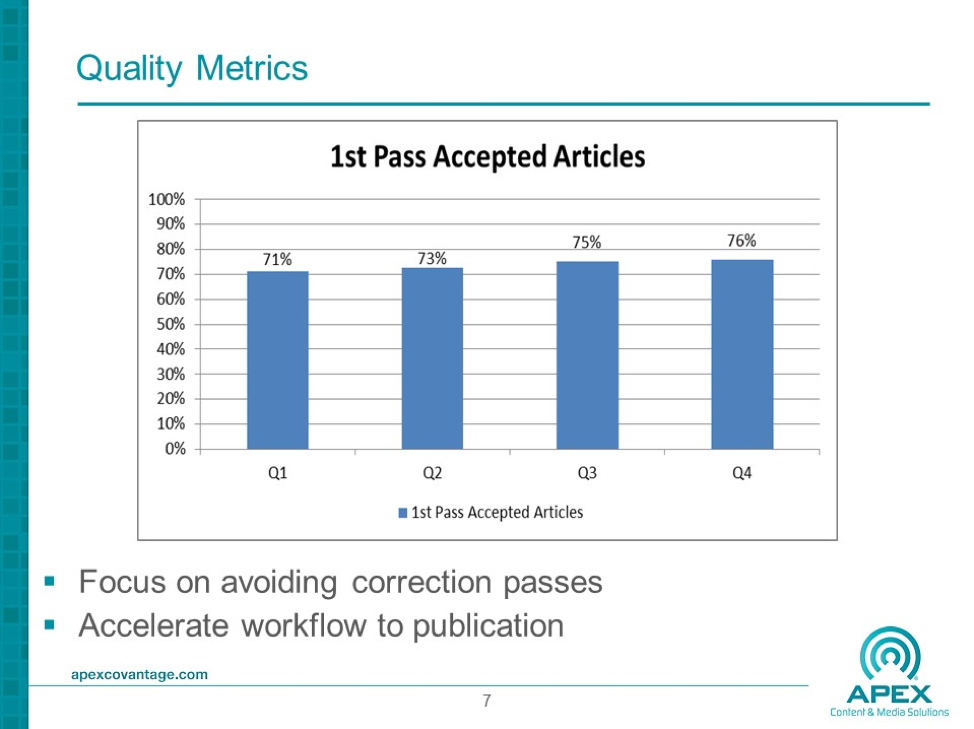MODERATOR:
Mike Friedman
Journals Production Manager
American Meteorological Society
Boston, Massachusetts
SPEAKERS:
Sheila Gafvert
Production Team Manager
American Meteorological Society
Boston, Massachusetts
Carol Jones
Production Manager
Wolters Kluwer Health
Philadelphia, Pennsylvania
Greg Suprock
Head of Solutions Architecture
Apex CoVantage
Herndon, Virginia
REPORTER:
Mike Friedman
While there are myriad journal production workflows being followed by publishers, there are almost as many ways to measure just how well these workflows are being followed and how effective they are. This session presented different production metrics and approaches from 3 perspectives: a small society publisher, a large commercial publisher, and a production vendor. The goal was to give a wide perspective on the most effective and efficient ways to track journals production and what metrics may work best for you.
Sheila Gafvert, the Production Team Manager at American Meteorological Society (AMS), started by emphasizing the vast number of metrics that can be tracked (Figure 1).

She explained that what helps to whittle that down is identifying how the particular workflow is structured, and break down the possible metrics into 4 categories:
- Number of manuscripts ready for specific actions;
- Number of tasks completed by staff, vendors, and authors;
- Durations for task completions; and
- Counts relevant to production work but not directly affected by it.
Gafvert also emphasized the different uses to which metrics can be applied, which for AMS includes identifying problems and ways to increase efficiency, prioritizing allocation of staff and resources, contributing to staff and vendor evaluations, demonstrating accountability to upper management, ensuring author needs are being met, and forecasting future needs and performance targets. She concluded by suggesting how publishers can start evaluating what metrics are best for them (Figure 2).

These steps include identifying the questions to answer, confirming the audience or end user, defining the terms, vetting the results, and considering how vendor(s) can help.
Next, Carol Jones from Wolters Kluwer Health gave an overview of Wolters Kluwer, which publishes 300 journals, and identified 3 main types of workflows that they handle: traditional article-based, fully open access, and continuous publication. For all of the different workflows, she emphasized how valuable it is to spend time building reports that consistently track the major milestones as well as the intervals of time needed to complete individual production tasks. These reports can also track open access payments that can be integrated into the workflow. Jones suggested always keeping in mind the primary goals when defining and building production reports: They must accurately assess appropriate production metrics to meet the expectations of customers and authors, increase internal awareness of productivity and vendor performance, and identify trends in content flow so adjustments can be made.
Finally, Greg Suprock from Apex CoVantage discussed workflow management tools for tracking end-to-end production tracking for Apex customers. He identified 4 key performance indicators that should be tracked: turnaround time, source discrepancies, alterations tracking, and individual performancemeasures. While turnaround time is a more obvious metric to track, identifying source discrepancies, or reasons for production delays, is a key part of the vendor/publisher partnership. He explained the goal of defining the right metrics for tracking and measuring performance avoids redundant correction passes so as to accelerate the workflow through to publication (Figure 3).

Having flexible tools and simple, clear reporting (with easily understandable graphs and real-time results) can give publishers an excellent picture of potential hitches in the workflow so they can effectively manage them.
An interesting thread through all of the presentations was a consistent agreement on what types of metrics should be tracked. All publishers have the same goals of eliminating inefficiencies and tracking manuscripts effectively and quantitatively through the major publication milestones. In this session we saw an excellent example of how that is accomplished from 3 different perspectives.
Links to Presentations
- https://www.councilscienceeditors.org/wp-content/uploads/2.4-Gafvert.pdf
- https://www.councilscienceeditors.org/wp-content/uploads/2.4-Jones.pdf
- https://www.councilscienceeditors.org/wp-content/uploads/2.4-Suprock.pdf
